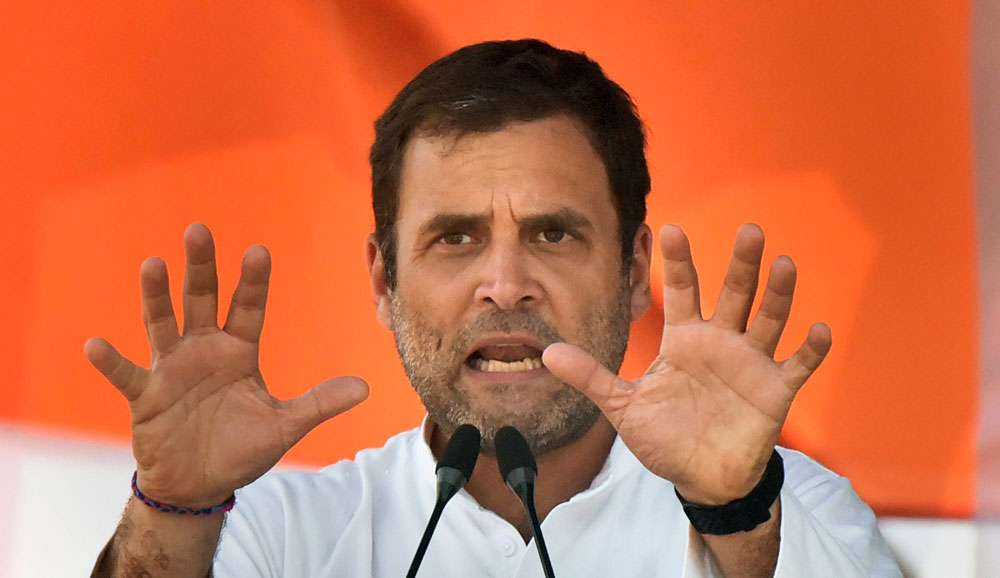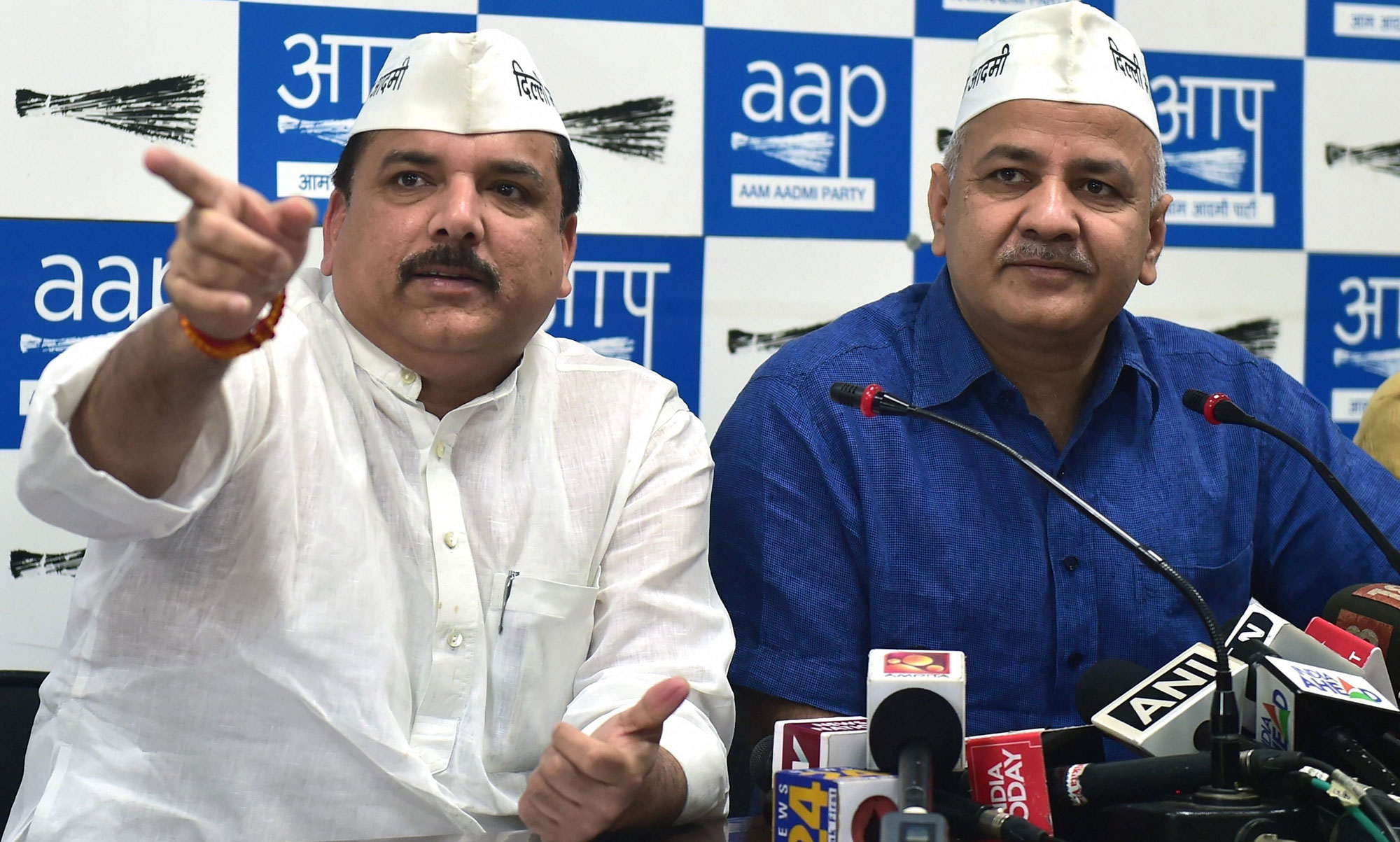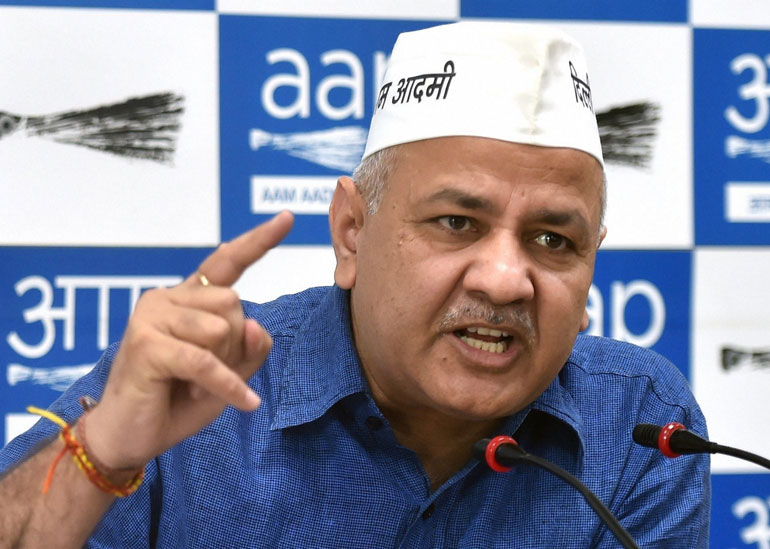Some places (like some people) punch way above their weight. Delhi can be counted among them. The National Capital Territory accounts for just seven Lok Sabha constituencies. Yet, for the past several weeks, the protracted negotiations between the Aam Aadmi Party and the Indian National Congress to arrive at an electoral understanding drew an inordinate amount of attention from politically conscious citizens across the country.
Sharad Pawar and H.D. Deve Gowda, Mamata Banerjee and Chandrababu Naidu publicly and privately urged the leadership of the two parties to set aside their differences and take on the much bigger challenge of defeating the Bharatiya Janata Party.
It wasn’t just political leaders who sought this alliance. Aware of the symbolic significance of the national capital in the political imagination of the country, many ordinary citizens, too, desired such a tie-up. An AAP-Congress alliance had the potential to defeat the BJP in a majority of the seats in the city. Conversely, a three-way fight could deliver all seven to the BJP.
Seven seats may not count for much in the overall measure of things. But it would be a huge loss of face for the ruling party which won them all in 2014. Besides, the coming together of the AAP and the Congress would have also signaled an ideological unity in an election that is crucial to India’s future as a secular democracy.
Right till the very end — the evening of April 26 which was the last date of withdrawal of candidature — many Delhi voters kept their fingers crossed, clutching on to the hope that despite the bitter past between the AAP and Congress, the two would ultimately tango.
That was not to be. The two parties failed to come to an understanding. Each side, unsurprisingly, blames the other.
In the war of words that has broken out since the collapse of the putative alliance, Arvind Kejriwal has questioned the Congress’s sincerity in fighting the BJP. The Congress, on the other hand, has accused the AAP of being overambitious and deliberately sabotaging the possibility of a united fight against the BJP.
From afar, the Delhi imbroglio can come across as a classic case of petty egos and myopic politics coming in the way of a much needed unity to battle a bigger enemy. Many are deeply disappointed and frustrated that despite all those spectacles of “Opposition unity” over the past one year, parties fighting the BJP simply fail to come together when it matters the most, at the hustings.
Yet, on closer analysis, the failure of the AAP and the Congress to work out a deal also offers an object lesson on the complexity of Indian politics and the continuous churn that simply cannot be constrained into a simple and neat binary. It is also a tale of generational conflict, between elderly uncle and cocky nephew if you will, neither willing to cede ground (entrenched versus newly acquired) despite a rampaging enemy at the door.
Their competing narratives are compelling. The AAP may be the new kid on the Delhi block but it has good reasons to swagger. It came from nowhere, riding on the Anna Hazare-led “anti-corruption” movement in 2011 that took the national capital by storm. Kejriwal broke off from his avowedly apolitical guru to set up the Aam Aadmi Party next year. That gamble paid off.
In the Delhi assembly elections, the fledgling party won as many as 28 seats in the 70-seat assembly. The BJP was only marginally ahead with 31 seats. The biggest loser was the Congress. Under Sheila Dikshit, the Congress had won three consecutive terms and transformed the city’s infrastructure. But it was felled by the AAP wave, reduced to just eight seats in the assembly.
Despite the Congress’s ignominious defeat, the party decided to give conditional support to its new challenger in order to keep out the BJP. But the Kejriwal government, new to power and still enamoured by street politics, lasted just 49 days.
In the Lok Sabha elections less than six months later, Delhi succumbed to the Modi wave. Kejriwal, with the inevitable confidence that comes to newly minted Davids against entrenched Goliaths, thought he would do to Modi what he had achieved against Sheila Dikshit. His foray into Varanasi proved a mistake. He lost by over three lakh votes.
But it is to the credit of AAP that it did not let that misadventure curtail its zeal. Varanasi apart, the AAP was trounced in Delhi as well with the BJP sweeping up all seats in the city. But instead of retreating from the field, the young party invested its politics with that much more zest and enthusiasm.
This gamble resulted in spectacular gains. In the February 2015 elections, the AAP’s wave of 2013 turned into a tsunami. It won 67 of the 70 assembly seats with a vote share of 54.3 per cent. The BJP came a very remote second with three seats. The Congress got zero.
With Delhi under its belt, the AAP acquired national ambitions. But its foray in Punjab failed to take off after showing some promise. It fared worse in other states it was eyeing — Haryana, Goa, Maharashtra. In Delhi itself, the 2017 municipal elections proved a dampener. The BJP won a giant’s share of the local seats (181), with the AAP getting a mere 48 and the Congress 30. In terms of votes, Congress’s near 22 per cent was not that dismal compared to the AAP’s 26 per cent.
The collapse of the AAP-Congress talks this month lies in this shifting narrative. The AAP is clearly the bigger force in Delhi. But the AAP wanted to leverage its strength in the capital to bargain for a larger footprint elsewhere. It initially wanted an electoral alliance with Congress in 33 seats spread over Punjab (13), Haryana (10), Delhi (7), Goa (2), and Chandigarh (1).
AAP leaders admit that the Congress dismissed their demand for an alliance in Punjab and Goa out of hand. It was, they claim, willing to hold talks on 18 seats — Delhi, Haryana and Chandigarh.
The Congress denies this completely. It insists that Rahul Gandhi, who was particularly keen on an alliance with AAP, had authorized party functionaries to confine the deal to only Delhi. In Delhi, the Congress conceded that the AAP was stronger — and negotiated on a 4:3 deal, with four for AAP.
The AAP’s argument is that since the Congress got zero Lok Sabha seats in 2014 and followed that up with a bigger zero in the Delhi assembly polls in 2015, it was getting too great a share.
The AAP was willing to be “generous only if it could leverage its clout in Delhi to make gains in Haryana and Chandigarh. In Haryana, it sought a tripartite deal between the Congress, the Jannayak Janata Party (floated by Dushyant Chautala) and itself on a 6:3:1 or even a 7:2:1 formula. The Congress saw no reason to give seats to the AAP (or the JJP) in a state where both are untested entities.
The Congress’s refusal to give up three or four seats in Haryana (where it won only one in 2014) may seem pointlessly cussed — especially if that concession could have secured a win-win deal in Delhi with the AAP.
But the Congress, insiders insist, cannot abandon its own fort. It may not be the force it once was but every time it has conceded space to a newcomer to stave off encroachment of the BJP, it has lost ground forever. In 1996, P.V. Narasimha Rao was much too generous to the Bahujan Samaj Party in Uttar Pradesh and the Congress has never recovered since. In the rest of north India (barring Uttar Pradesh and Bihar), the Congress still poses the biggest challenge to the BJP. To capitulate to the AAP’s demand would mean the beginning of the end in Haryana and Delhi — and perhaps beyond.
For those of us who would like to see a straight battle between the BJP and the “Opposition”, the Delhi experience is distressing. Looked at more optimistically, it also suggests a multihued, multipronged response to a monolithic offensive.













